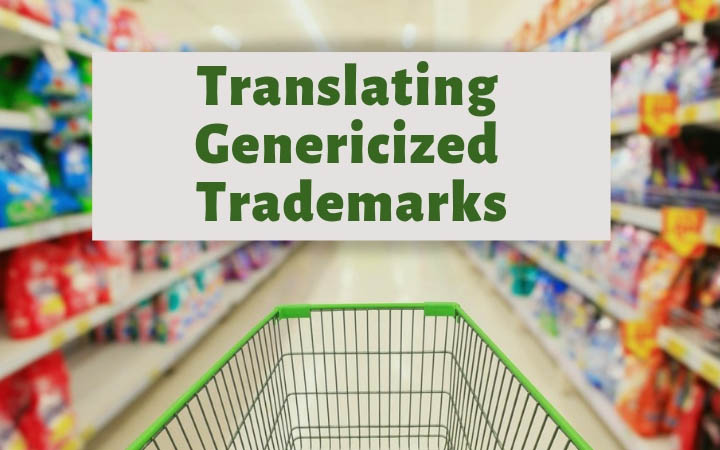Language is constantly changing and adapting to suit its environment. One noticeable example of this is in brand names for new technologies or products becoming used as a generic name for any similar product whether they were produced by the brand or not. From trampoline to cellophane, words that were once specific brand names have entered everyday language to refer to general products, a process that continues today with the likes of the term photoshopping and googling. However, the introduction of these terms is not universal to all languages and can provide potential problems for translators, not to mention lawyers and marketers. This article highlights several notable examples of brand names that have been generalized and how to approach translating these so-called genericized trademarks.
Notable Generic Trademarks
Dig a little into the subject and there’s a surprisingly large number of words that have made their way into common use that were once brand names. These include Velcro, which is trademarked by Velcro Companies and refers to, instead, the “hook-and-loop fastener” system – a term that is almost never used in common speech to refer to the system.
Similar examples include:
- A Zimmer frame to refer to a walking frame (with the Zimmer frame specifically belonging to Zimmer Holdings).
- A Taser to refer to an electroshock weapon instead of one created by Taser International. It is, in fact, an acronym for a fictional weapon: Thomas A. Swift’s Electric Rifle. This has created the verbs ‘to tase’ and ‘to taser’.
- A Hoover to refer to a vacuum cleaner instead of one created by Hoover Company. This has also become a verb synonymous with ‘to vacuum’.
- Rizla instead of tobacco rolling papers, with Imperial Brands’ Rizla papers being the world’s most successful rolling paper brand.
- Coke can be often used to refer to all Cola in the UK, not just Coca Cola, while in some parts of the southern US, Coke is the generic term for all soda.
- PowerPoint to refer to all slide shows or presentation programs, instead of exclusively the slide show presentation program developed by Microsoft.
- A Zeppelin to refer to rigid airships (with Luftschiffbau Zeppelin being a leading German airship company founded by Count Ferdinand von Zeppelin).
- Photoshop to refer to all photo manipulation instead of the program by Adobe. It is commonly used as a verb ‘to photoshop’ or ‘to shop’ to mean digital photographic manipulation.
Potential Problems for Translators
For understandable reasons, companies often fight hard to prevent their brand from becoming a generic term. The Velcro legal team has even created a music video complaining about the use of the generic term Velcro. Some companies have been more successful in the prevention of their brands becoming generic terms, such as Nintendo who spread the use of “video game console” instead of a “Nintendo”, which now sounds antiquated and out of touch.
With this in mind, some brands may become incorporated as genericized trademarks in some languages while others may not. There is also the issue of culture and which products have been marketed more successfully in an area. For example, the generic untrademarked term “ramen” is used in the US to refer to instant noodles, while this is often referred to using the genericized trademark “Pot Noodle” in the UK, so even in the same language complications can arise as to what is being referenced. These issues can complicate translations for translators who are unaware of what is actually meant by the trademark, leading to possible misunderstandings and mistranslations. For instance, in Mongolia, the term “Canon” is used to refer to photocopying, named after the brand, but if this term were to be translated literally into English due to an insufficient level of cultural knowledge on the part of the translator, there could be problems in regard to whether they are specifically referring to the brand.
How to Translate Genericized Trademarks
As with most translation issues, there are a few strategies that can be used depending on the translator’s aim. If the cultural context is important or perhaps if there is no equivalent term in the target language, an explanation may be necessary. However, often times these terms are just used without people being aware that they are referring to a specific brand. In these instances, the brand name becomes a synonym rather than a new term, so Hoover – now essentially a synonym for vacuum cleaner in English – should be substituted with the non-trademark name vacuum cleaner when translating into another language.
In short, generic trademarks are an issue to be aware of when translating and care should be taken considering both the context and the intention of the piece. When possible, for clarity’s sake, translators may want to consider avoiding their use unless it sounds unnatural to do so.




